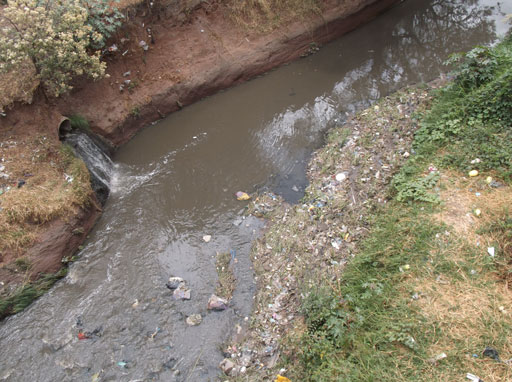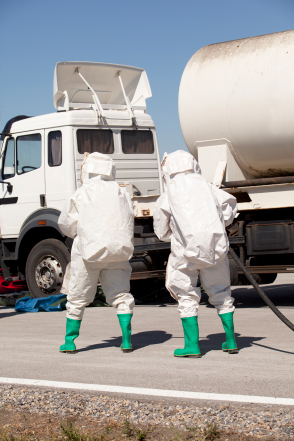Comprehensive Liquid Waste Disposal: Solutions for Residences and Services
Comprehensive Liquid Waste Disposal: Solutions for Residences and Services
Blog Article
Exactly How Liquid Garbage Disposal Works: A Thorough Overview of Methods and Technologies Used
Introduction of Fluid Waste Kind
The complexity of liquid waste types demands a detailed understanding of their features and effects for disposal. Fluid waste can generally be categorized into several kinds, consisting of commercial, municipal, farming, and contaminated materials. Each group shows unique homes, needing certain administration techniques to mitigate ecological and wellness threats.
Industrial liquid waste originates from making procedures and commonly has a series of pollutants, such as heavy steels, solvents, and natural substances. Community liquid waste, largely making up wastewater from homes and business facilities, includes natural matter, nutrients, and pathogens (industrial wastewater treatment). Agricultural fluid waste, including runoff from ranches, may have fertilizers, chemicals, and animal waste, posing dangers to water quality and ecosystems
Harmful fluid waste is characterized by its toxicity, reactivity, or possible to cause harm. Comprehending these diverse liquid waste types is vital for creating effective disposal techniques and ensuring conformity with ecological regulations.
Physical Treatment Techniques

Screening is the preliminary step, where bigger bits and particles are removed from the fluid waste utilizing displays or grates. This procedure safeguards downstream tools from damages and makes sure smoother procedure. Complying with screening, sedimentation utilizes gravitational force to different solids from fluids. In sedimentation tanks, larger particles resolve at the bottom, developing a sludge layer, while the made clear fluid can be more dealt with.
Filtration is an additional crucial technique that involves passing the fluid through permeable products, such as sand or membranes, to record smaller fragments. This step boosts the high quality of the fluid, making it appropriate for subsequent therapy processes.

Chemical Therapy Techniques
Chemical therapy techniques are essential for successfully handling fluid waste, especially in dealing with liquified and colloidal contaminants that physical techniques might not sufficiently remove. These methods make use of various chemical representatives to reduce the effects of, speed up, or transform harmful substances into less damaging kinds.
One common technique is coagulation and flocculation, where chemicals such as alum or ferric chloride are included to promote the aggregation of put on hold fragments. This process improves sedimentation, permitting easier removal of the resulting sludge. Furthermore, oxidation procedures, using agents like chlorine or ozone, are utilized to break down complicated natural substances and pathogens, rendering the waste much safer for discharge or additional therapy.
Neutralization is an additional crucial method, which changes the pH of acidic or alkaline waste streams to neutral levels, protecting against possible find out this here harm to downstream systems and the environment. Furthermore, advanced oxidation processes (AOPs) use combinations of oxidants and ultraviolet light to break down relentless toxins, attaining a greater degree of treatment efficiency.
Biological Treatment Procedures
Organic therapy procedures play an important function in the administration of liquid waste by using microorganisms to disintegrate raw material and lower impurity degrees. These processes can be extensively categorized into cardio and anaerobic therapies, each using certain microbial communities to accomplish effective waste degradation.
Cardio therapy includes making use of oxygen to assist in the malfunction of organic products by bacteria. This procedure is generally implemented in turned on sludge systems, where oygenation storage tanks provide a conducive setting for microbial growth, resulting in the oxidation of organic toxins. The resultant biomass can be separated from treated effluent via sedimentation.
In contrast, anaerobic therapy happens in the lack of oxygen, depending on various bacteria to damage down organic issue. This technique is especially useful for high-strength waste, as it produces biogas, a renewable resource source, while lowering sludge manufacturing. Technologies such as anaerobic digesters are often employed in industrial and community applications.
Both anaerobic and cardio biological therapies not only lessen the ecological influence of liquid waste yet also help with resource recovery, making them important parts of sustainable waste administration methods. Their versatility, effectiveness, and effectiveness sustain their prevalent implementation throughout numerous fields.
Arising Technologies in Disposal
Ingenious approaches to liquid garbage disposal are quickly developing, driven by improvements in technology and a raising emphasis on sustainability. click Among these emerging innovations, membrane bioreactors (MBRs) have actually gotten grip for their capacity to combine biological treatment with membrane filtration, resulting in high-grade effluent that can be recycled in numerous applications. MBRs enable smaller footprints and extra efficient operations compared to traditional systems.
Another promising development is making use of anaerobic digestion combined with nutrient recovery technologies, which not only treats fluid waste yet additionally creates biogas and recoups beneficial nutrients like nitrogen and phosphorus. This twin advantage boosts source effectiveness and lowers environmental impact.
Additionally, progressed oxidation procedures (AOPs) are being taken on for the degradation of intricate natural pollutants. These methods make use of effective oxidants and drivers to damage down impurities at the molecular degree, using an extremely effective solution for challenging waste streams.
In addition, the assimilation of fabricated knowledge and device knowing in waste management systems is maximizing operational efficiency and anticipating maintenance, leading to lowered expenses and boosted ecological compliance. These technologies mirror a considerable change in the direction of more effective and lasting liquid garbage disposal methods.
Verdict
Finally, effective fluid waste disposal demands an extensive understanding of various methods and technologies. The combination of physical, chemical, and biological therapy approaches makes sure the effective monitoring of diverse waste kinds. Furthermore, the introduction of innovative innovations enhances therapy efficacy and promotes sustainability in waste monitoring practices. By constantly progressing these methodologies, it ends up being feasible to address the growing obstacles connected best site with fluid waste, inevitably adding to environmental defense and resource healing.
Liquid waste disposal is a critical aspect of environmental management, needing a detailed understanding of different strategies and modern technologies customized to various waste kinds. Fluid waste can generally be categorized into a number of types, including industrial, municipal, agricultural, and unsafe waste. Agricultural liquid waste, consisting of drainage from ranches, might consist of plant foods, chemicals, and pet waste, posturing threats to water high quality and communities.
Various physical therapy techniques play an important function in handling liquid waste effectively - industrial wastewater treatment.In final thought, effective fluid waste disposal requires a comprehensive understanding of different techniques and technologies
Report this page